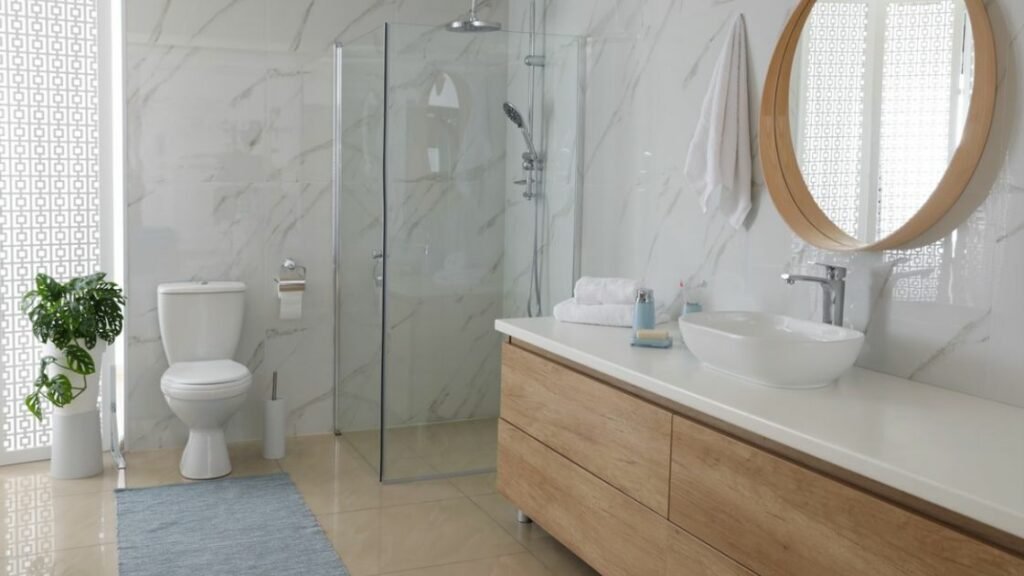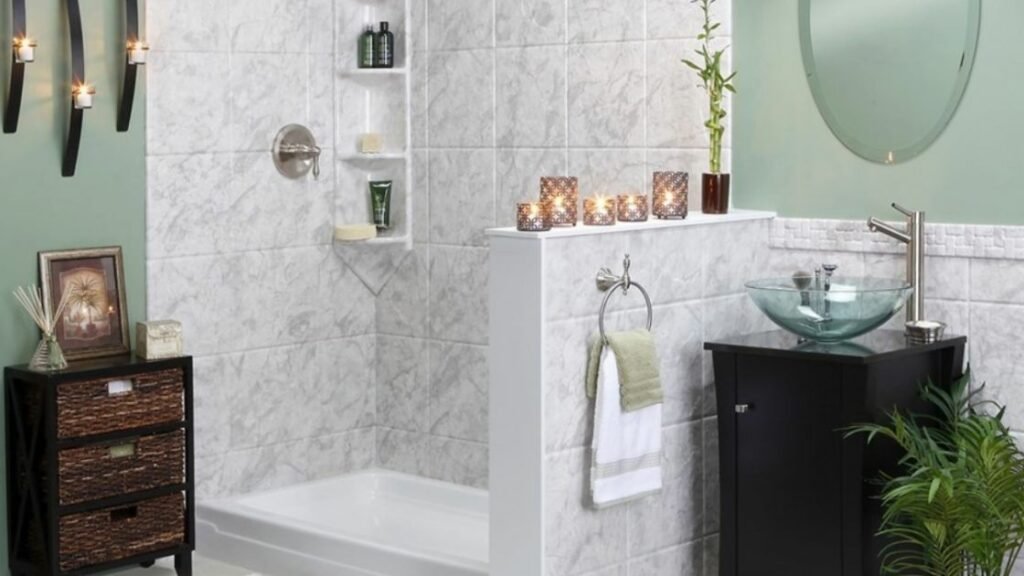A bathroom remodel can be one of the most exciting yet challenging home improvement projects. When working with professionals, especially for a bathroom renovation in Houston County, or other Texas towns, it’s crucial to engage contractors early to ensure everything from material selection to obtaining permits is handled smoothly.
Understanding the typical stages of a bathroom remodel can help homeowners prepare for the journey ahead and navigate potential challenges with ease. Let’s walk through the process.

Planning and Design Phase
Establishing a Vision
What do you want to change? Do you want to improve functionality, upgrade outdated fixtures, or create a luxurious spa-like atmosphere? Defining your goals upfront is crucial as it will guide the entire process. In this phase, homeowners also need to decide on a budget, the materials they want, and whether they’ll hire a contractor or handle the work themselves.
Working with a Contractor or Designer
If you choose to work with professionals, such as a contractor or bathroom designer, they’ll help bring your vision to life. You’ll likely need to have initial meetings to discuss the layout, design ideas, and budget. This is the time to gather quotes, ask questions, and compare options.
Demolition and Removal
This stage can take anywhere from a couple of days to a week, depending on the size of the bathroom and the scope of work. Contractors will remove old tiles, fixtures, cabinets, and any other elements that need replacing.
While this phase might look chaotic, it’s a necessary step. Homeowners should expect noise, dust, and potential inconveniences such as having limited access to the bathroom during this time.
Possible Challenges
During demolition, it’s common for contractors to uncover hidden issues, such as mold, outdated plumbing, or structural problems. While these discoveries can delay the project and increase costs, addressing them now is essential to prevent future complications.
Plumbing and Electrical Work
Whether you’re moving the toilet, adding new light fixtures, or installing a larger bathtub, these tasks are critical for a functional bathroom.
Plumbing and electrical work can be time-consuming, especially if major changes are involved. It’s not uncommon for this phase to take one to two weeks, depending on the complexity of the layout changes.
Installing Fixtures and Cabinets
Bringing in New Elements
Once the plumbing and electrical work is done, the exciting part begins — installing new fixtures and cabinets. During this time, you’ll see your selections come to life: new vanities, mirrors, toilets, and faucets. The process can take up to a week, depending on how much needs to be installed and if custom cabinetry or countertops are involved.

Tiling and Flooring
The Finishing Touches
Tiling and flooring installations are one of the last steps in a bathroom remodel and can take anywhere from a few days to a week or more. The type of tile you select will greatly influence the time required. Intricate mosaic tiles, for example, require more precision and time to install compared to larger, simple tiles.
Painting and Final Touches
Most contractors recommend painting last to avoid damage or marks during the earlier stages. Choosing a moisture-resistant paint is essential to maintain the integrity of the walls in a humid environment like the bathroom. This stage only takes a few days, but it makes a significant difference in tying the whole room together.
Final Installations
At this point, any final details, such as attaching towel racks, mirrors, and lighting fixtures, will be completed. You’ll also have an opportunity to inspect the finished work, ensuring everything meets your expectations before officially signing off on the project.
Timelines and Potential Delays
On average, a bathroom remodel can take anywhere from 2 to 6 weeks, depending on the size of the bathroom and the complexity of the changes. However, if you encounter unexpected problems, this timeline may stretch to 8 weeks or more.
Common Causes of Delays
While every remodel comes with its unique challenges, the most frequent causes of delays include:
- Permitting issues: Some remodels require building permits, which can take time to process.
- Unforeseen structural issues: Hidden problems like water damage or outdated wiring can slow progress.
- Custom orders: Special orders for cabinetry, countertops, or specialty tiles often have longer lead times.
Conclusion
Remodeling a bathroom is a rewarding project that can significantly enhance the comfort, function, and value of your home. Understand the process, prepare for potential challenges, and set realistic expectations. Remember, the disruption is temporary, but the results can bring lasting enjoyment for years to come.

